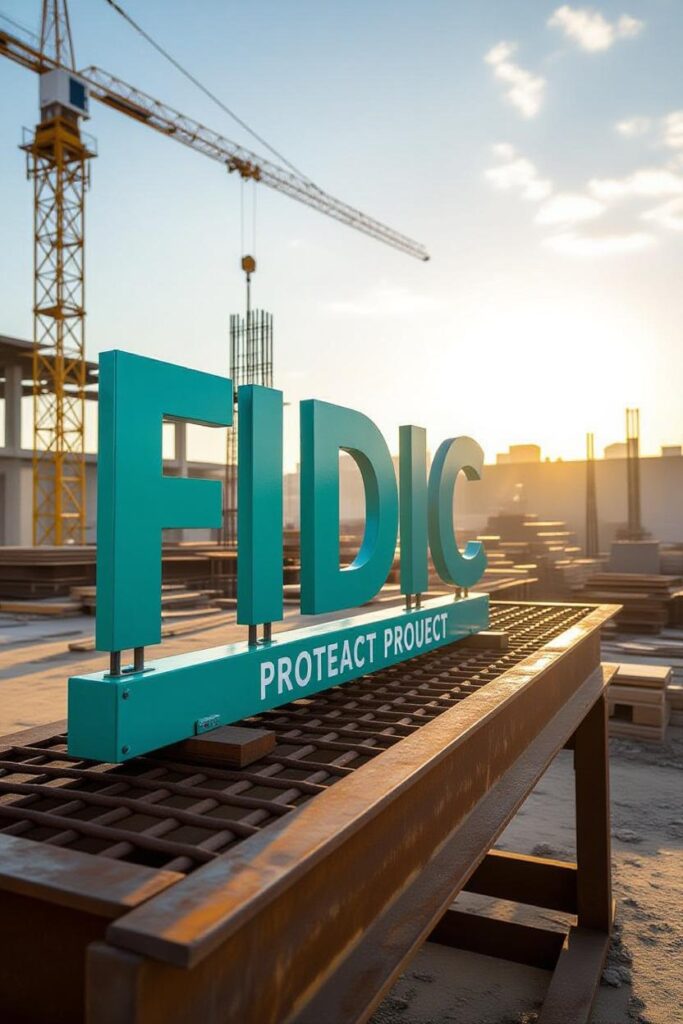FIDIC Dispute Avoidance: 3 Proven Steps to Clarity -Defining Scope
Introduction Most construction disputes don’t begin in a courtroom — they begin quietly, during the contract drafting process or execution. When a project’s scope is not defined with precision, interpretation fills the gaps — and interpretation inevitably invites conflict. Clear scope definition is more than a drafting exercise; it’s a strategic risk-management tool. In FIDIC-based projects, Clauses 1.1 (Definitions) and 13 (Variations) provide the legal architecture for defining and controlling the scope. But in many real-world projects, these provisions are under-scrutinized at the time of signing — until they re-emerge as major points of contention in a claim. The Critical Role of Scope in FIDIC Contracts Clause 1.1 (Definitions) — Building the Framework Clause 1.1 of FIDIC (such as in the Red Book) defines fundamental contractual terms — “Contract,” “Specifications,” “Drawings,” “Employer’s Requirements,” and more. These definitions establish the baseline for rights, obligations, and risk. If they are vague or inconsistent across contract documents, misalignment is almost inevitable. For example, ambiguous definitions around “temporary works” or “interface responsibility” often become the source of large disputes. Precise definitions help avoid future surprises and maintain clarity in risk allocation. Clause 13 (Variations) — Managing Change Transparently Clause 13 governs how scope can change during a project, defining formal processes for instructing, valuing, and approving variations. When adhered to with rigor — through written instructions, contemporaneous record-keeping, and explicit determinations (e.g., under Sub-Clause 3.5) — it provides a clear, enforceable roadmap. If variation procedures are not well-defined or are ignored, changes become ad hoc, and parties are more likely to disagree on valuation and entitlement — creating fertile ground for disputes. A Key Precedent: ICC Case No. 10619 (2001) ICC Case No. 10619 is widely cited in the FIDIC community as a landmark case. In this matter, a tribunal in Paris enforced the Engineer’s binding decision under the FIDIC Red Book. Because the variation mechanism and determination procedures were clearly drafted and followed, the tribunal found no ambiguity, and there was no escalation into a broader dispute. Legal commentary supports the case’s importance. As Christopher Seppälä explains, this interim award demonstrates that a “binding but not final” decision by the Engineer can be enforced through arbitration when the contract provides a proper variation and decision path. fidic.orgSimilarly, a detailed analysis by the Dispute Board Federation highlights how this case reinforced the enforceability of Engineer (or DAB) decisions under properly governed FIDIC procedures. disputeboard.orgHoward Kennedy’s summary of FIDIC case law lists ICC 10619 under decisions involving Clause 67 / 11 (or older numbering) for the Red Book. howardkennedy.com+1 This case affirms a critical principle: contract precision empowers enforceability. Embedding Scope Clarity at Every Project Stage Practical experience across major infrastructure and GIGA programs shows that dispute avoidance is most effective when scope clarity is embedded continuously — not just at signing, but throughout execution and close-out. Pre-Contract Phase: Laying the Foundations Align Stakeholders Early: Conduct workshops to agree on deliverables, exclusions, and risk allocations. Harmonize Documents: Ensure technical specs, drawings, and commercial terms use consistent definitions and language. Risk Matrix: Use a risk-allocation matrix to map design, interface, and execution risks. Document Assumptions & Exclusions: Clarify what is excluded or assumed upfront, to avoid later misunderstandings. Draft Variation Procedures: Define exactly how changes will be instructed, priced, and approved — including who has the authority and via which mechanism. Contract Execution Phase: Managing Change Record Everything: All instructions, clarifications, and changes should be documented in writing. Maintain Logs: Set up a variation/changes register to record request dates, approvals, and value/time impact. Engineer’s Determinations: Use Sub-Clause 3.5 (or its equivalent) to ensure decisions are reasoned, written, and distributed. Review Mechanisms: Hold regular (e.g., monthly) scope-control meetings among commercial, legal, and project teams to review pending changes. Post-Contract Phase: Closing the Loop Reconcile Variations: Make sure all approved variations are reflected in the final account. Validate Deliverables: Compare final works against the defined scope to identify any gaps or overruns. Early Dispute Management: Use Dispute Boards, or early settlement mechanisms, to resolve remaining misalignments before they turn into formal claims. Feedback & Learning: Document lessons learned on scope issues and feed them into contract templates and future risk assessments. Why Legal & Contract Teams Should Lead the Clarity Culture For contract professionals and legal advisors, the role goes beyond interpretation — it’s about enabling behavior. Lawyers and contract managers should be central to the project governance structure, not just as reviewers, but as strategic enablers. Legal teams can help shape the variation workflow, ensuring that every instruction is compliant, documented, and enforceable. Technical teams benefit when definitions are not only precise but operationally meaningful. When legal oversight is integrated into project management, risk becomes visible, communication becomes traceable, and decisions become defensible. At Alnaqeeb & Co Law Firm, our approach aligns legal architecture with project execution. We design governance systems where the contract is used actively—not just signed and shelved. Dispute Avoidance Through Preventive Infrastructure Scope clarity should be seen as the cornerstone of a preventive dispute-resolution strategy, not an afterthought. When properly drafted, it enables: Effective Use of Dispute Boards: A well-defined contract enhances the role of Dispute Adjudication Boards (DABs) or Dispute Avoidance Boards (DAB) by giving them a clear mandate. Early Warning Systems: With clarity in scope, risk registers and early-warning procedures become meaningful, actionable, and effective. Enforceability of Decisions: By structuring variation instructions and determinations clearly, parties increase the likelihood that decisions (like Engineer or DAB determinations) are enforceable through arbitration. These mechanisms work only when the contract itself is clear, comprehensive, and consistently applied. Real-World Lessons from Major Projects In high-value, high-risk projects (such as those under Saudi Vision 2030), the cost of ambiguity is too high to ignore. Poorly defined scope between civil and MEP teams, or undefined design responsibilities, often lead to time and cost overruns. On projects where clarity was prioritized: The difference between drawings and specifications was reconciled early. Variation processes were centrally managed and monitored. Dispute Boards stayed out of arbitration because issues were addressed
FIDIC Dispute Avoidance: 3 Proven Steps to Clarity -Defining Scope Read More »










